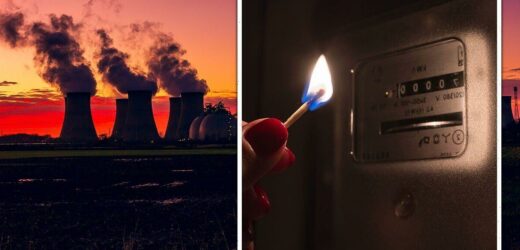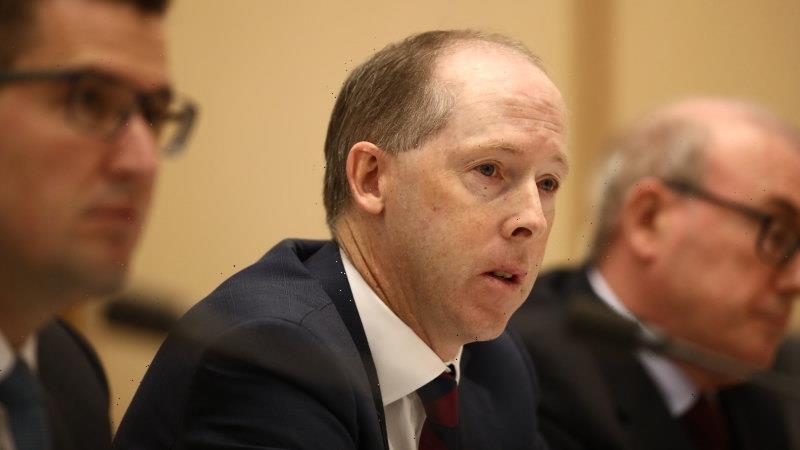Carbon capture tech in farming could lower carbon emissions
We use your sign-up to provide content in ways you’ve consented to and to improve our understanding of you. This may include adverts from us and 3rd parties based on our understanding. You can unsubscribe at any time. More info
Drax Power Station released new documents this week detailing plans to slash its emissions with a new carbon capture and storage scheme (BECCS), which also involves reducing its energy consumption. The power station plans to build the world’s largest CCS project, but as a result, this would produce less energy than it currently does.
This is because Drax, the large biomass power station in North Yorkshire, will need to use energy to instead capture, compress, transport, and send carbon dioxide underground in the CCS process.
While CCS has been pinpointed by some as a cutting-edge green technology that can help the UK to slash emissions and reach net zero targets, it could also come at a cost.
That is because the energy Drax can produce from its two biomass units for Britain would plummet by nearly one-third (28 percent) to facilitate the CCS project, according to Drax’s own figures.
This is equivalent to the amount of electricity needed to supply nearly 41,000 homes.
It comes as households are already struggling to pay their energy bills as prices continue to soar amid a crippling crisis.
In fact, households may even have to fork out up to £3,200 from October if industry regulator Ofgem’s price cap (maximum annual tariff) prediction is correct.
But not only is BECCS posing a threat to billpayers, according to experts, but it has also been argued that CCS technologies may not be as green as they are made out to be.
Almuth Ernsting, Co-Director of Biofuelwatch says: “Drax’s BECCS proposal is a blatant attempt to secure more subsidies, with zero regard for people struggling with energy bills nor for the climate.
“The technology they propose is entirely unproven, but if it was to work, it would result in Drax burning as many trees as today in order to generate significantly less electricity.
“Money and time would be better spent on truly renewable energy sources such as solar and wind power, instead of investing public funds into an ecologically damaging industry.”
Elly Pepper, Senior Advocate for NRDC (Natural Resources Defense Council) and Cut Carbon Not Forests, says: “Drax’s carbon capture plans are bad news for the climate and for keeping the lights on.
“The company has shown it can’t be trusted with the environment, and now it’s showing it can’t be trusted with the UK’s energy security.”
This also comes after Drax was accused of “greenwashing” as its practice of burning wood pellets for energy (biomass) harms the climate and threatens biodiversity, critics say.
In fact, the North Yorkshire plant releases over 13 million tonnes of CO2 a year, using around 7 million tonnes of wood pellets, making it the UK’s biggest emitter.
But Drax has argued that biomass can play a role in both reducing emissions and removing carbon dioxide from the atmosphere, with its biomass meeting “the highest sustainability standards”.
DON’T MISS
Octopus Energy launches scheme for millions to save £3,775 [REPORT]
UK gets huge £10m hydrogen boost: ‘Can export to Europe’ [REVEAL]
Scholz horror as Putin sets exact date Russia to CUT OFF supply [INSIGHT]
It also ensures that its biomass does not cause deforestation, forest decline or carbon debt.
Now, CCS is sparking similar concerns among experts who are sceptical of BECCS.
Ms Pepper continued: “This is a bad bet for two reasons: capturing carbon uses a lot of energy, leaving a lot less for families and homes; relying on burning wood keeps the UK hooked on imports of foreign materials that can fluctuate wildly in price just like gas and oil.
“The cheapest, most secure ways to keep the lights on and bring down bills are building more wind, solar and investing in home energy efficiency measures. Instead, the UK Government is paying Drax over £1billion every year to burn the world’s forests.”
Drax has been contacted for comment.
Source: Read Full Article







